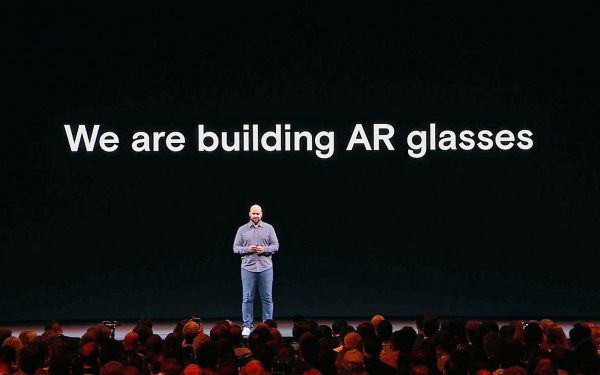Recent reports say that Facebook is currently working on a stand-alone AR glasses. With this news released, there’s speculation saying that the AR glasses could replace our daily use of smartphones. The social media network has partnered with Luxottica, the owner of eyewear brands such as Ray-Ban, Oakley, and Coach. Facebook visioned that this development has great potential to surpass the basic functionality of smartphones. In fact, with the AR glasses, Facebook is ready to take things up a notch to gain a competitive advantage in the ferocious market place. Many resources believe that Facebook is escalating its approach. And this AR technology is ready to hit the market as early as 2023.
The Future of Facebook’s AR Glasses
As we mentioned earlier, Facebook’s AR Glasses is a standalone product. But as far as we know, it goes by the code name — Orion. Some might ask, what can these AR glasses do. Some reliable resources reveal that Facebook’s AR glasses function just like any other AR glasses by providing an interactive experience of a real-world environment. But what makes it different from the rest is it boast on the self-functioning feature. Hence, with or without a command it can operate on its own. That means, a wearer can take calls, reference information displayed on the lenses, and live stream content that resides in the real world. With the computer-generated perceptual information and sometimes comes with auditory and somatosensory enhancement, the AR glasses promise to bring more interactive experience for its users. Facebook is also currently working on an artificial intelligence voice assistant that would be used for the glasses as well. The social network also experimented with a ring device, code-named — Agios. What it does is it let users input information through a motion sensor.
Development Hiccups
It’s no secret that Facebook is also facing obstacles in regard to the development of these devices. According to reports, the network is having a hard time reducing the size of the device into a form factor that will appeal to their target market. Hence, there’s no guarantee that the AR Glasses will be released on time. However, reports have it that the CEO of the social network, Mark Zuckerberg, is strongly interested in the glasses and has asked for the glasses to be put on a high priority level.
Facebook’s AR is a Predecessor of Snapchat?
Some people are skeptic about the AR Glasses due to Facebook’s track record on making hardware. Especially when the network previously created the Facebook phone that did not deliver the results that they want. Snapchat, which is also owned by Facebook, has its own glasses as well called “Spectacles.” In fact, the platform recently announced Spectacles, a redesigned version of the AR sunglasses that features a sleek new design with an added HD camera. The glasses will be available in November. The marquee feature is a second camera that allows the glasses to capture depth for the first time. It comes with a suite of new 3D effects. The glasses are available carbon black and mineral. It features a lightweight steel frame, adjustable tips, and a tinted lens for sun protection. The Spectacles allow users to capture images and videos by a quick tap of a button that is located on the top of the glasses. Users can sync it to their mobile phones where they can edit them, send them to friends on the platform, or export them to share on other platforms.
Are We Looking Towards a Future of AR Glasses?
Facebook’s AR Glasses isn’t the first in the market. In fact, Google has the Google EE, which is the updated version of the Google Glass and Google Glass Explorer. There are also reports saying that Apple will release its own version of AR glasses soon. The future of AR on social media seems imminent. With it being launched on social media and users having a grasp on it, it has become widely accepted. A key feature of Facebook’s AR Strategy includes its ‘Camera Effects Platform’ that features an AR Studio and Frame Studio. The platform encourages developers and designers to create interactive features and effects that will open the social media network to the idea of AR. Since AR is now a huge part of social media today, it will continue to be so. Presumably, there will be plenty of breakthrough coming up in the next years. With that said, it’s not only the users who can hugely benefit from this but also brands that are promoting their products and services on social media.
What else can the AR technology do?
With the AR technology now, whether it’s mobile or AR glasses; it all shares the same goal to deliver a more engaging experience. Hence, you’ll rise in AR virtual stores that eventually allow users to shop better. Instead of the boring 2D online shopping, a user can now shop directly from the comforts of their own home but still get a shopping experience. The technology may also allow users to attend live events, play AR games with fans, etc. As for brands, they can further engage with their customers through interactive AR videos. It can also bring forth more brand awareness because a great AR experience is shareable. AR is now associated with social media ever since its blooming popularity. These networks are also very encouraging to not only use their AR features but to also create their own AR experiences as well. More and more brands today are also starting to embrace AR technology. With that said, AR will continue to rise and it’s highly likely that we will all be using this technology not only on social media but in other aspects of our lives. So, are you ready?
